Budapest has a way of pulling you in. Maybe it’s the golden light bouncing off the Danube, the smell of fresh chimney cakes curling through cobblestone streets, or the late-night hum of ruin bars spilling onto the sidewalks. Whatever it is, this city never feels like it’s just for passing through.
I moved here in 2019, expecting to use it as a launchpad for European adventures. Instead, the pandemic grounded me – and gave me the gift of time to explore every corner, from tourist must-sees to side streets barely wide enough for two people to pass. I’ve seen Budapest in every season: steaming in summer, dusted with autumn leaves, and twinkling under Christmas lights.
Overview of the Itinerary
This 2-day itinerary mixes well-known sights with places I returned to again and again, the ones that made living here feel special.
I’ve split each day into morning, midday, and evening so you can pace yourself. If you prefer a slower trip, just jump to the parts that interest you – everything’s grouped by location to avoid backtracking. Restaurant and bar recommendations are woven into the plan, with a few bonus picks at the end for extra inspiration.
🎒 Thinking about doing a tour in Budapest?
I lived there for three years and tried a bunch – some were fantastic, others a bit meh. Here’s the honest breakdown of what’s actually worth it. Check out my guide to Budapest tours.
Day 1 – Pest-Side History & Ruin Bar Nights
Morning – Getting Your Bearings
Kossuth Lajos Square & Hungarian Parliament
Start your day in Kossuth Lajos Square, where the city’s political and architectural pride stands tall: the Hungarian Parliament Building. Its Gothic Revival spires look even more dramatic in the morning light, and the building’s scale is staggering up close.
It’s easy to admire the beauty – but it’s also worth remembering what it represents. For many Hungarians, Parliament is both a symbol of national identity and the seat of Viktor Orbán’s government, whose policies have drawn criticism for eroding democratic freedoms. Whether you see it as a masterpiece of architecture, a contested political stage, or both, it’s one of the most important places to start understanding Budapest today.
You can tour the inside if you book in advance, but even without stepping in, it’s worth circling the square to see the statues, fountains, and the memorial to the 1956 revolution.
Shoes on the Danube Memorial
From here, walk a few minutes down to the riverbank for one of Budapest’s most poignant sites – the Shoes on the Danube Memorial. Sixty pairs of rusted iron shoes are set into the stone, a tribute to the Jews killed on this very spot during World War II. It’s quiet here, even when there are tourists around, and it’s the kind of place where you instinctively slow down and look out over the water.
Coffee Break: Kontakt or My Little Melbourne
After Parliament and the Shoes on the Danube, start making your way toward the Jewish Quarter — but take a coffee break en route. Kontakt is just off the Basilica square and known for its no-nonsense espresso (they famously don’t do sugar, syrups, or milk alternatives). If you’d rather wait until you’re right in the Jewish Quarter, My Little Melbourne was one of my regular stops — a tiny space with consistently good flat whites and the hum of locals starting their day. Both spots keep you roughly on track without adding a 20-minute detour.
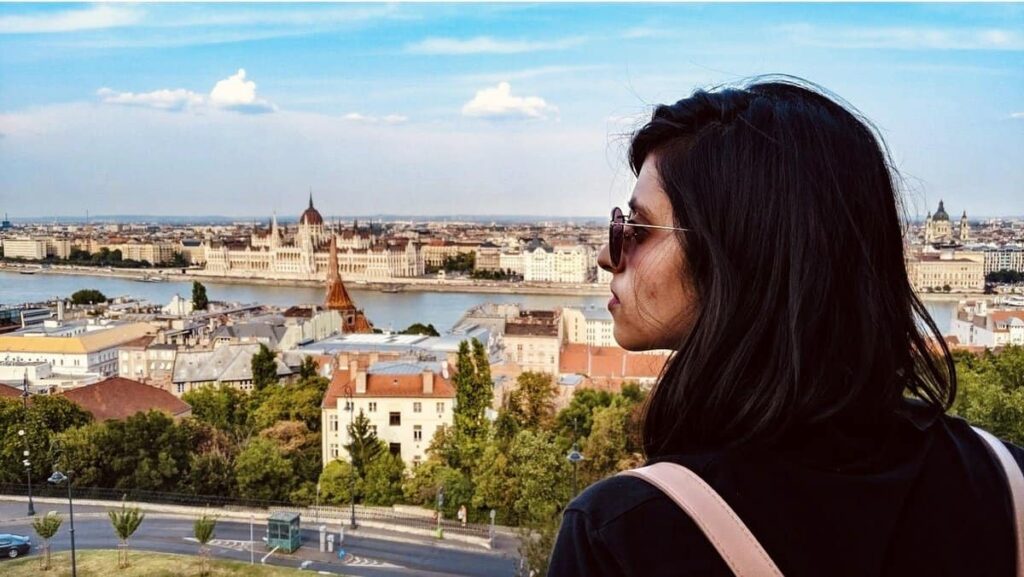
Midday – Jewish Quarter Life & Street Culture
Dohány Street Synagogue
Head into the Jewish Quarter — my first neighborhood in Budapest, and the place I spent countless afternoons wandering. Start at the Dohány Street Synagogue, the largest in Europe and second largest in the world. It’s not just a place of worship, but a memorial to Hungary’s Jewish community, much of which was wiped out during the Holocaust. Your ticket covers the synagogue, the Jewish Museum, a Holocaust memorial, and a small cemetery — a sobering counterpoint to the busy streets just outside. Living here, I never got used to that contrast: the hum of nightlife layered over a history that’s still felt in every brick.
If you want to make the most of your visit, book a guided tour with entry ticket here – it’s the best way to understand the site’s layered history and symbolism.
Lunch – Lángos or Turkish on Kazinczy utca
From here, I’d walk you towards Kazinczy utca — one of the quarter’s main arteries — for lunch. If you want the full Hungarian street food experience, grab a lángos: fried dough with sour cream and cheese, eaten leaning against a counter while watching the chaos of delivery scooters and tour groups go by. On days when I wanted something lighter, I’d duck into one of the Turkish spots nearby for grilled meat and fresh bread.
Sunday-Only Bonus: If you happen to be here on a Sunday morning, swing by Szimpla Kert’s Farmers Market before the nightlife takes over. From 9am–2pm, the ruin bar swaps beer for bread, veggies, and homemade goods in a quieter, more local atmosphere.
Street Alleys & Vintage Finds
This part of the Quarter is packed with personality — crumbling courtyards next to colourful murals, tiny wine bars tucked into side streets, and vintage shops where I’ve scored pieces I still wear years later. You might spot the gates of Szimpla Kert, the city’s most famous ruin bar, but I’ll save the full story for tonight.
Optional Pause – Károlyi Garden
If you need a breather, stroll over to Károlyi Garden. It’s not technically in the Jewish Quarter, but I used to escape here when the neighborhood felt too loud. It’s one of the city’s oldest public parks, with shady benches perfect for recharging before the evening.
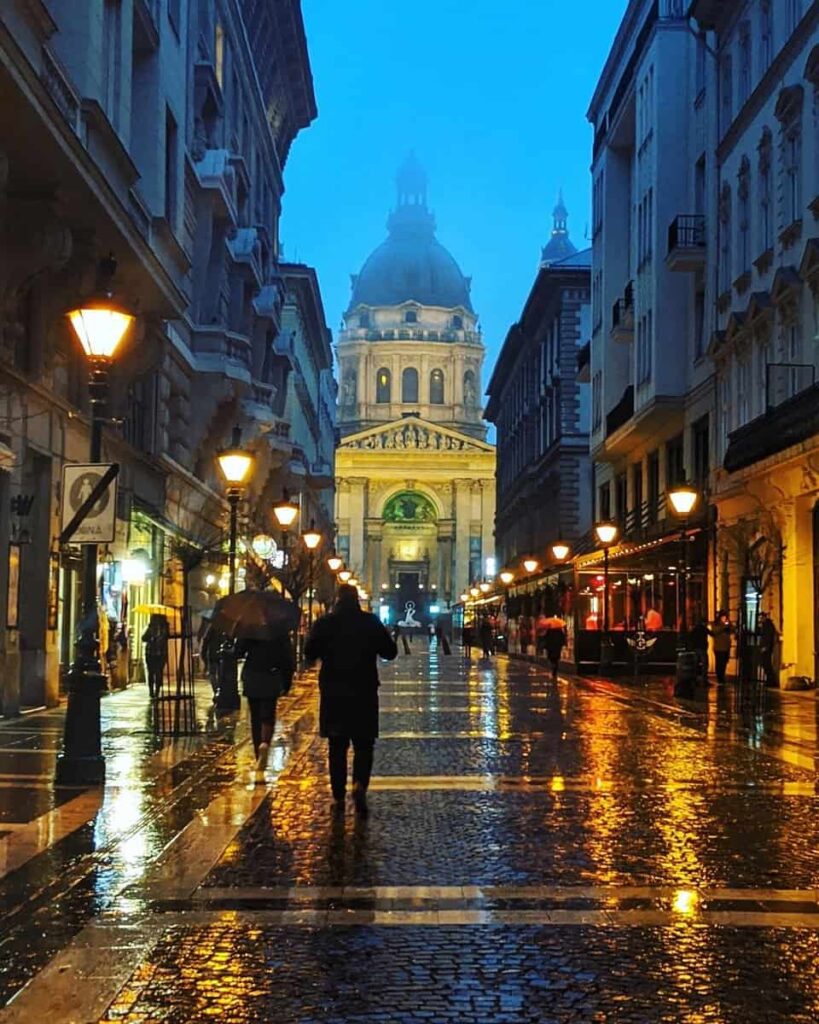
Evening – Ruin Bars & Cheap Beer
If you only have one night in Budapest, make it the Jewish Quarter. Even after three years here, I’d still tell first-timers to start at Szimpla Kert. Yes, it’s chaotic and packed, but it’s the ruin bar blueprint — mismatched chairs, plants growing out of bathtubs, and walls so layered with stickers you can’t see the paint anymore. I rarely stayed here long, but it’s the perfect way to kick off the night. Order a beer or a shot of pálinka (Hungary’s potent fruit brandy) and take a quick lap of the place before moving on.
Nearby Alternatives
From Szimpla, walk a few minutes to Kőleves Kert, a leafy garden bar that feels more like a backyard than a venue. Mazel Tov is just around the corner — technically a restaurant, but its airy courtyard, good cocktails, and soft lighting make it a solid stop for a slower round.
Later Stops
If you want more energy, Ellátó Kert has a younger, livelier crowd and plenty of outdoor seating. For something quieter, Csendes offers a calmer, art-covered space where you can actually talk without shouting.
Food Before Bed
Most nights I’d end up at Bors GasztroBár for their soups and creative sandwiches, or grab a kebab from a stand on Kazinczy utca and eat it on the walk home.
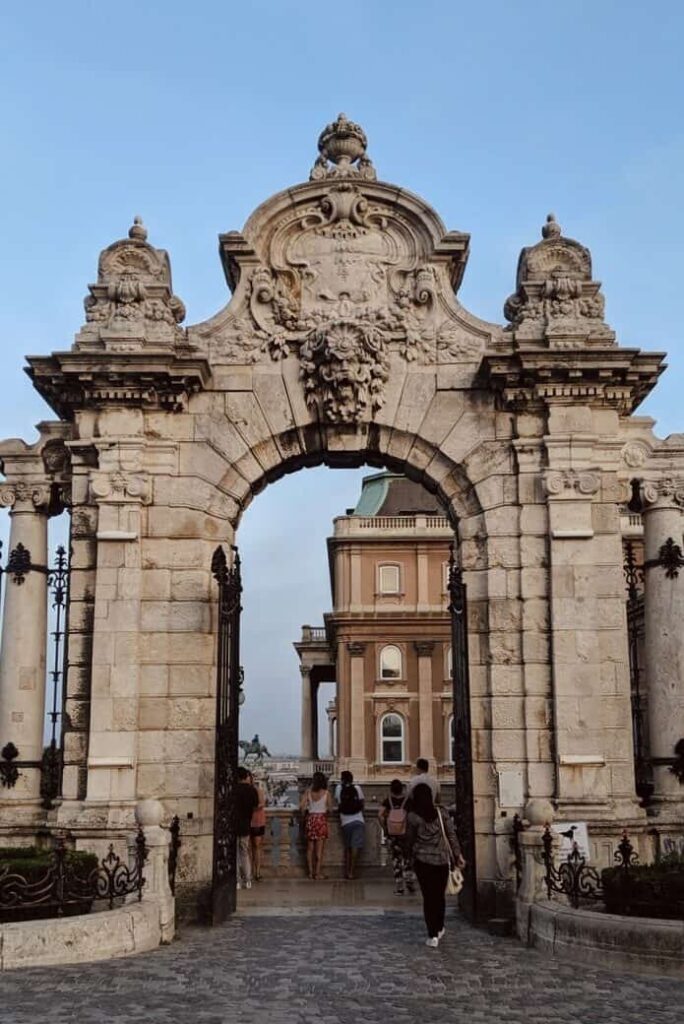
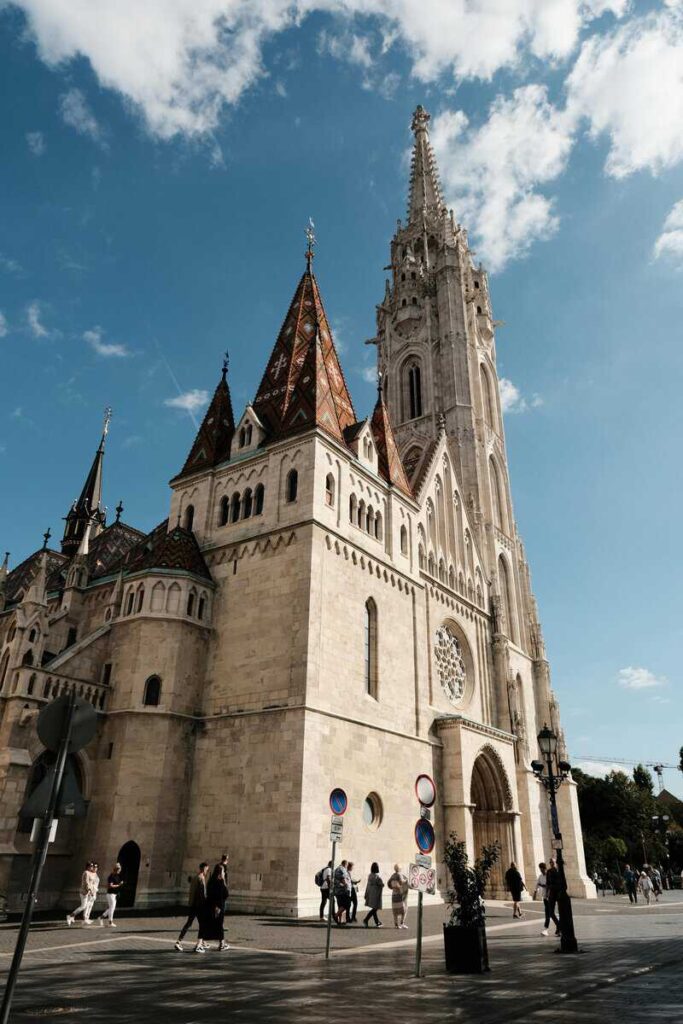
Day 2 – Buda’s Calm, Baths, and Sunset Views
If Day 1 is all energy and late nights, Day 2 is where Budapest slows down. You’ll cross to the Buda side for castles and churches, take one of Europe’s prettiest tram rides, and end with either a long soak in a thermal bath or a walk along the Danube at dusk. This is the side of the city I’d retreat to when I wanted space, quieter streets, and views that made me fall in love with Budapest all over again.
Morning – Buda’s Calm & Castle Hill
Buda Castle
Start with Buda Castle, not just for the architecture but for what it represents. Once the seat of Hungarian kings, it’s now home to the Hungarian National Gallery and Budapest History Museum. The courtyards and terraces are open to wander, with some of the best panoramic views of the city. You can walk up (it’s a decent incline) or take the Castle Hill Funicular for the novelty.
Buda Castle isn’t just a postcard – it’s also a symbol of political power in Hungary. The complex is often used for state events, and like much of the city’s heritage, it’s been caught up in the narrative-making of Viktor Orbán’s government. Knowing that adds a different weight to standing here, surrounded by centuries of history and the realities of present-day politics.
If you want the full context while exploring, join a Buda Castle District walking tour with a historian, it’s a deep dive into the layers of history and politics that shaped this part of the city.
Matthias Church
A short walk away is Matthias Church, one of the most beautiful Gothic churches in Europe. Its colorful tiled roof is visible from half the city, and the interior is all ornate frescoes and stained glass. I’ve been here in every season – it’s equally stunning in winter snow and summer sunlight. For the best view, climb the tower.
Fisherman’s Bastion
Right next to the church is Fisherman’s Bastion, with its fairytale-like turrets overlooking the Danube and Pest side. It’s partly free to wander, with a small fee for the upper balconies. Most people come here for sunrise or sunset; I prefer mid-morning, when the light’s still soft and the tour buses haven’t fully arrived.
Optional Stop – Hospital in the Rock
If you’re interested in Cold War history, detour a few minutes from here to the Hospital in the Rock Museum. This underground labyrinth was used as a hospital during WWII and later as a nuclear bunker. It’s one of the few museums in Budapest where the storytelling is genuinely gripping – and it’s a sobering reminder of Hungary’s 20th-century traumas.
Coffee Break – Ruszwurm Confectionery
Before heading back downhill, stop at Ruszwurm Confectionery, a 200-year-old café famous for its cream cake. It’s tiny, the service is brisk, and it feels like time hasn’t touched it since the 19th century.
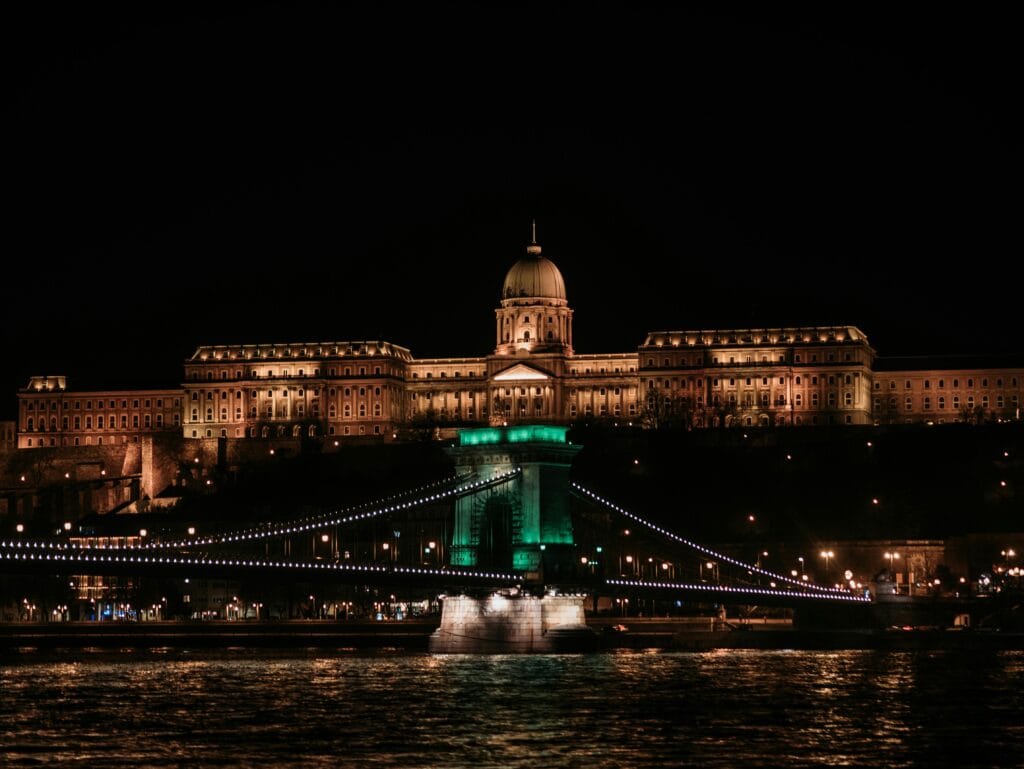
Midday – Tram Ride, Central Market Hall & The Whale
Tram 2 Along the Danube
From Buda, head back over the river and hop on Tram Line 2 – one of the most scenic tram rides in Europe. It runs parallel to the Danube, past the Parliament Building, the Chain Bridge, and the riverside promenade. I used to take this route when I lived opposite Margaret Island, and it never got old – even when it was just my commute. It’s also a reminder that Budapest’s public transport, a legacy of its communist past, is still one of the easiest and cheapest ways to get around.
Central Market Hall
Hop off at Central Market Hall, Budapest’s largest and most atmospheric market. Built in 1897, it’s a blend of wrought-iron architecture and pure chaos – in the best way. The ground floor is all fresh produce, meats, and rows of paprika in every shade of red. Upstairs, you’ll find embroidered textiles, wooden toys, and the food court serving langos the size of your head.
I used to come here more for the visuals than the shopping – the market hall is so perfectly symmetrical from the upper balcony that it’s worth stopping for a photo, even if you don’t buy a thing. But if you do shop, paprika makes a great, easy-to-pack souvenir.
Bálna Budapest (The Whale)
From the market, it’s a short walk south along the river to Bálna Budapest, a glass-and-steel structure that looks like a beached whale. Inside, you’ll find art galleries, event spaces, and a handful of bars and cafés with prime river views. I’d often end up here for after-office drinks — glass of fröccs (wine spritzer) in hand, watching the Danube flow past and looking across to Budapest University of Technology and Economics. It’s more relaxed than the Jewish Quarter but still feels social, especially in summer.
Optional Stop – Heroes’ Square and Vajdahunyad Castle
If you’ve still got daylight to burn, take Metro Line 1 to Heroes’ Square — an open-air monument to Hungary’s most important leaders. From here, wander into City Park for a peaceful stroll or check out Vajdahunyad Castle, a whimsical 19th-century mix of Gothic and Renaissance styles that looks plucked straight from Transylvania.
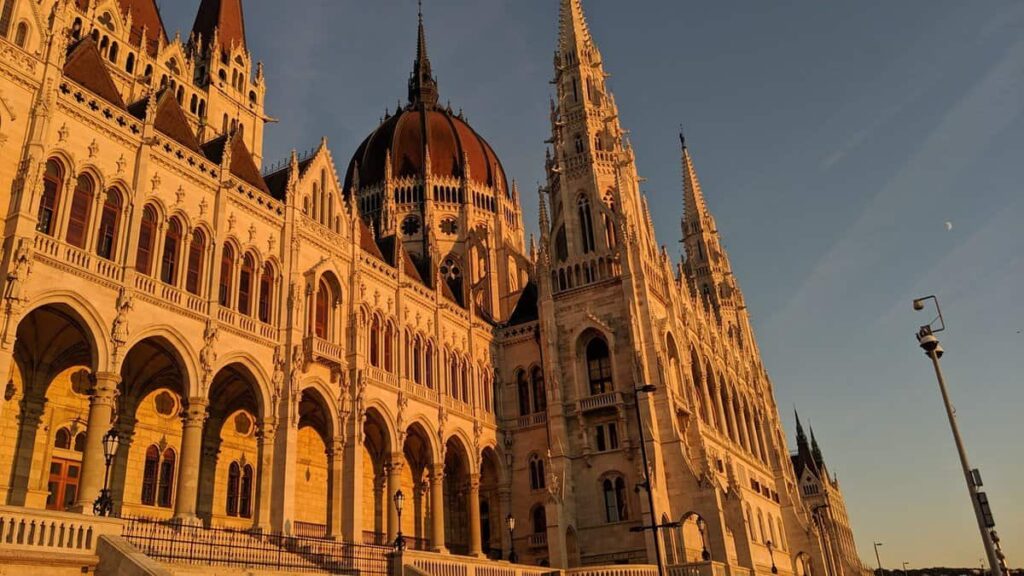
Evening – Baths or Riverside Walk
Thermal Baths
No trip to Budapest feels complete without stepping into one of its famous thermal baths – though which one you choose changes the whole vibe.
- Széchenyi Baths are the classic choice – bright yellow Neo-Baroque buildings, steaming outdoor pools, and a heavy tourist presence. I’ve gone early on weekday mornings and had a magical half-hour when it felt almost empty, but by mid-morning it’s shoulder-to-shoulder.
- Gellért Baths have an Art Nouveau elegance that makes the whole experience feel more intimate, even if you’re still sharing the water with plenty of others.
- Rudas Baths are partly from the Ottoman era, with a domed central pool and views from their rooftop hot tub over the Danube – my personal favorite for winter evenings.
If you go, bring your own towel and flip-flops, or you’ll pay extra. In summer, the baths can feel like a giant social pool party; in winter, they’re a sanctuary from the cold.
Riverside Walk at Dusk
If you’d rather stay dry, take an unhurried stroll along the Danube Promenade. I’ve always preferred walking the riverfront over the much-hyped river cruises – it’s free, you can linger where you like, and the view of the Parliament lit up at night is unbeatable. Start near the Elizabeth Bridge and head north, passing the lit-up Chain Bridge, Buda Castle glowing above, and Gellért Hill to your left.
In the quieter sections, you’ll pass couples, fishermen, and students from the nearby universities – it’s the kind of low-key local life you miss if you only stick to the big-ticket attractions. In a city where politics often spill into the streets, this walk always reminded me that Budapest’s everyday beauty belongs to its people, not just its government.
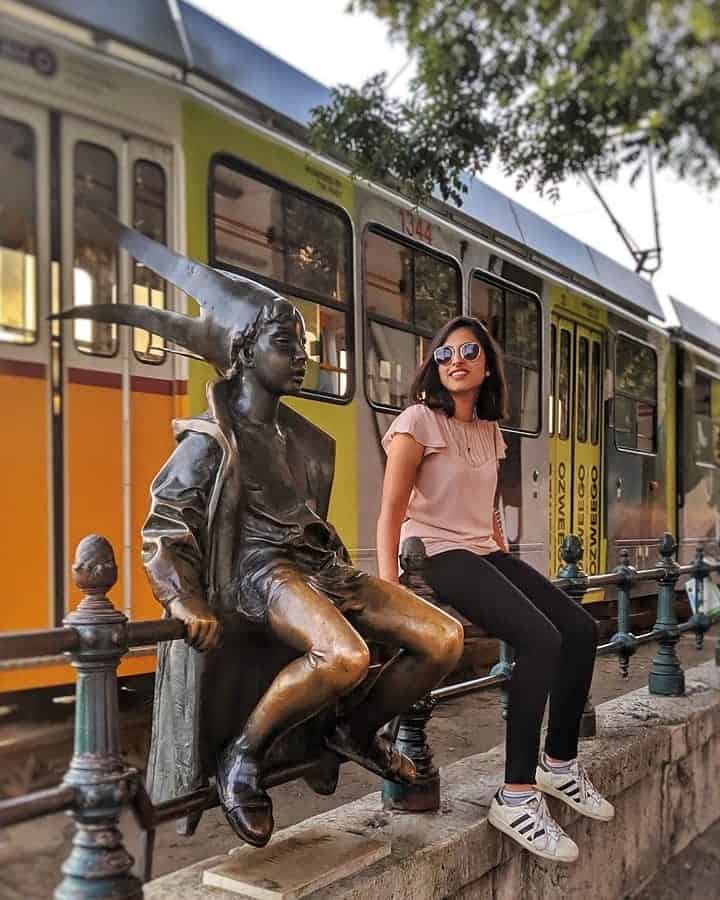
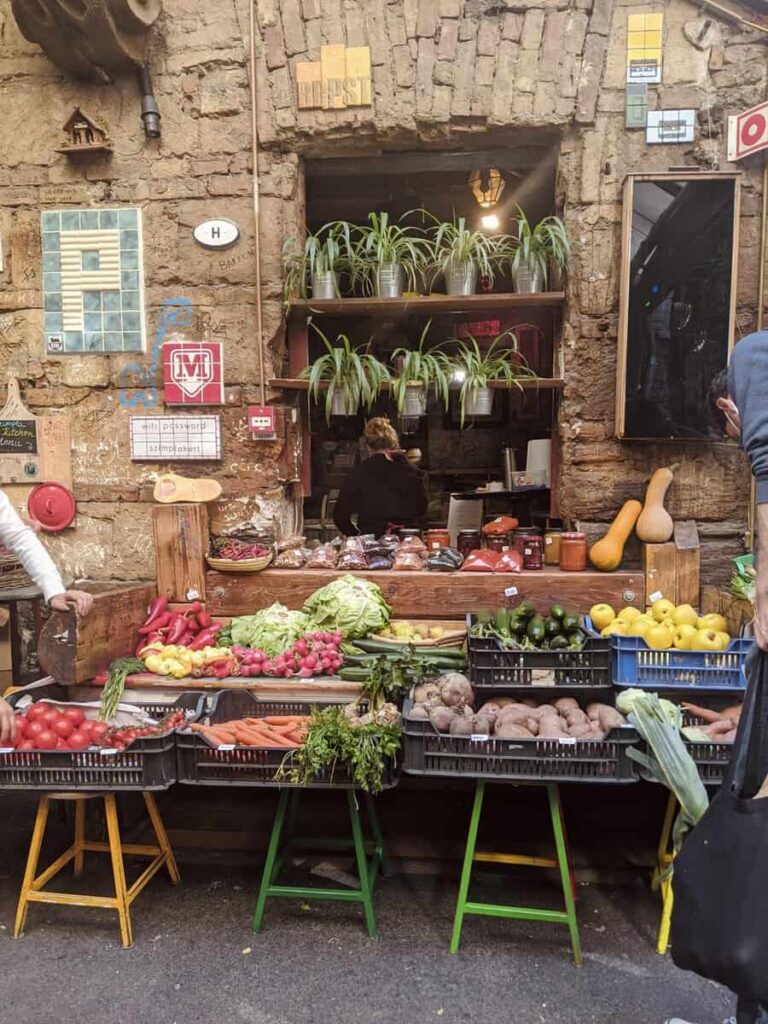
Evening
Heroes’ Square and City Park
Heroes’ Square (Hősök tere) is like the centerpiece of Hungarian history. It’s an impressive spot, with 14 of the most important Hungarian leaders standing proudly in the colonnades, and it’s definitely worth a visit.
After you’ve soaked in the history, take a leisurely stroll into City Park, which is just beyond the square. If you’ve got some energy left, I highly recommend walking over to Vajdahunyad Castle. Built in 1896, this castle was designed to resemble the castles of Transylvania, and it’s a charming little spot that feels like a step back in time. It’s a lovely way to wind down your day, surrounded by the serene beauty of the park.
Andrássy Avenue
If you want to end your weekend in Budapest with some shopping, then Andrássy Avenue is the street to be. Before visiting there I read it was the Champs-Élysées of Budapest, and there couldn’t have been a more disappointing description. But you can find beautiful tree-line streets and luxury stores. Even if you don’t want to shop, it’s a nice place to have a coffee or a meal. You can also find the Hungarian State Opera House on this street, though it has been under renovation for the past 5 years.
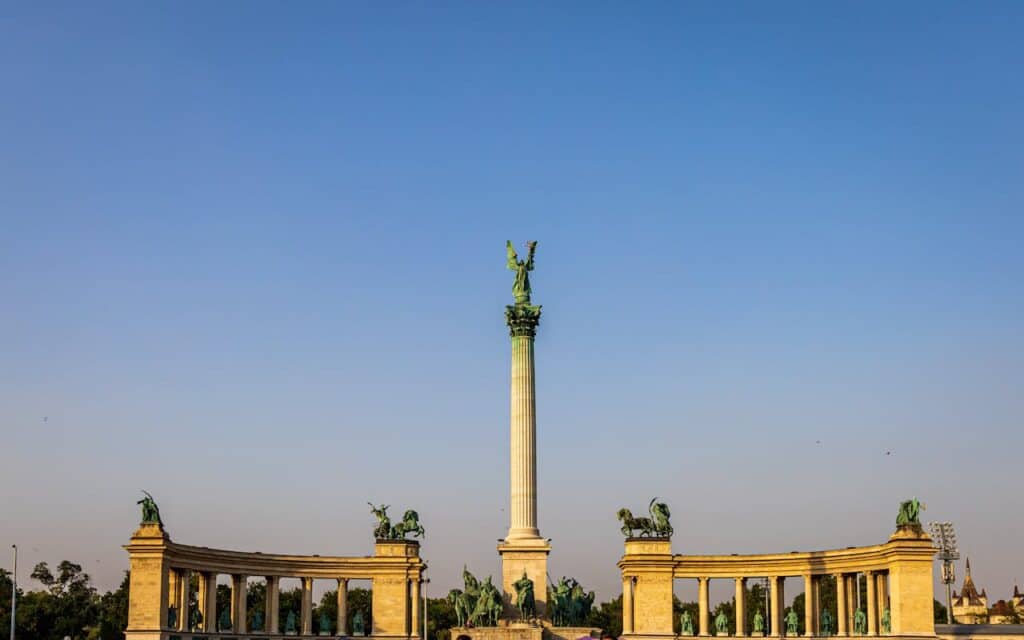
What to Skip (and Why)
Overpriced River Cruises
They’re marketed as a must-do, but honestly? You can see the same views — often better — from the Danube Promenade. The commentary is rarely insightful, and you’re stuck in a seat instead of being able to pause and take your time. Save your money for a tram ride or a drink with a view.
New York Café
Yes, it’s beautiful. Yes, the ceiling is Instagram gold. But the food is forgettable, the prices inflated, and you’ll spend more time queuing than eating. Budapest has plenty of historic cafés where locals actually go — this isn’t one of them.
Andrássy Avenue
It’s lovely for a short walk, but calling it the “Champs-Élysées of Budapest” oversells it. Unless you’re here for the Opera House (when it’s not under renovation) or some light window shopping, your time is better spent elsewhere.
Budapest Card
It sounds like a deal until you compare the numbers. For a short trip like this, you’ll save more with single- or multi-day transport passes. The free museum entries aren’t for the highlights most visitors actually want to see.
What to Eat in Budapest
Traditional Hungarian Food to Try
I’ll be honest—Hungarian cuisine isn’t my favorite. In fact, it’s probably my least favorite, which says a lot given how much I’ve traveled. But there are a couple of things you should try that I actually enjoy.
- Chimney Cakes: These sweet, doughy treats are everywhere in Budapest, and I’m a big fan. They’re made from pastry dough wrapped around a wooden spool and baked until golden. The classic version is rolled in cinnamon and sugar, but you can find variations with nuts, cocoa, or ice cream. Some say they’re overrated, but I find them irresistible—probably why I gained a few pounds after moving here!
- Langos: Hungary’s take on fried dough, Langos is a popular street food that’s worth a try. It’s simple, often topped with sour cream and cheese, but it’s the kind of comfort food that hits the spot when you’re exploring the city.
My Favourite Restaurants in Hungary
My Favourite Bars in Budapest
Where to Stay in Budapest
Budapest has 23 districts and two personalities: Buda and Pest, split down the middle by the Danube. It can feel like a lot to figure out where to stay, especially if it’s your first time in the city. I based myself in District V (Belváros-Lipótváros) and would still recommend it for a short trip – central, walkable, safe, and close to the big sights.
That said, different areas suit different vibes. Here’s a quick breakdown of neighborhoods I think are worth considering:
- District V (Belváros-Lipótváros): This is Budapest’s political and tourist heart. You’re within walking distance of Parliament, St. Stephen’s Basilica, and the Danube promenade. It’s flat and well-connected, which matters when you’ve got a full itinerary.
- District VII (Erzsébetváros): The Jewish Quarter is buzzing with ruin bars, nightlife, and creative energy. A decade ago, I’d have loved it, now I prefer sleeping somewhere quieter and walking over for the fun.
- District VI (Terézváros): Great for shopping and culture lovers. You’ll find the Opera House, fancy cafés, and Andrassy Avenue here.
- District I (Castle District): On the Buda side, this area is postcard-pretty and full of history. Think cobbled streets and castle views, but also hills and higher prices.
- District XIII (Újlipótváros): More local and laid-back. Still central, but with fewer tourists. I like this area if you want riverside walks and cafés without the crowds.
Need help deciding where to stay—or just want my top hotel picks for each district? I wrote a full guide to where to stay in Budapest with personal recommendations, pros and cons of each area, and tips for every budget.
Bonus Tips for Your Trip
Two days in Budapest is enough to catch its highlights and a few of its quirks — the parliament towers in morning light, pálinka-fueled ruin bar nights, the steam rising off Széchenyi’s pools in winter. Follow this itinerary and you’ll leave with a real feel for both sides of the Danube.If you’re staying longer, don’t stop here. Budapest is perfectly placed for easy escapes: wine towns, lakeside walks, even another capital just a train ride away. I’ve put together my favorite day trips from Budapest — tried-and-tested routes that build on what you’ve already seen in the city.
